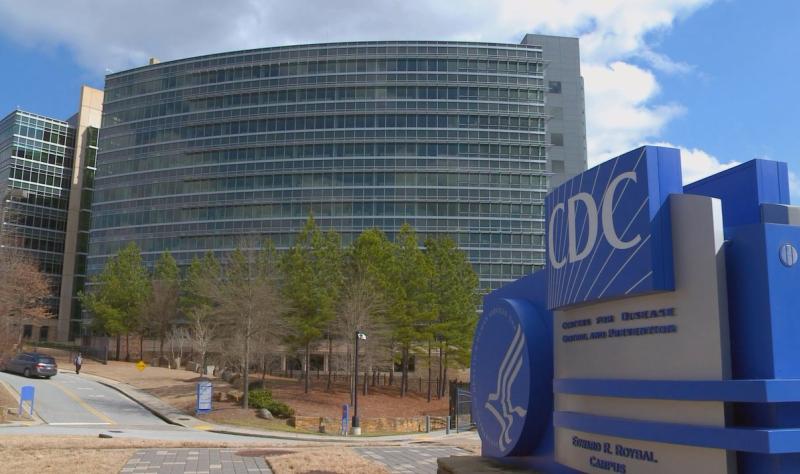‘Swarm’ of variants is driving up California COVID cases. Is this the start of the next surge?
‘Swarm’ of variants is driving up California COVID cases. Is this the start of the next surge? San Francisco Chronicle

As winter looms, so does the question of whether another COVID-19 surge is in store for the Bay Area.
New coronavirus subvariants are rapidly spreading across the country and California, overtaking the strain that led to a U.S. summer wave. Cases have begun to tick upward statewide after a monthslong decline, just ahead of the holidays and a cold weather front that will drive people indoors.
Last winter, the omicron surge took off during the holiday season and peaked in the second week of January, when an astonishing 18,000-plus cases per day were being reported in the Bay Area — nearly four times higher than the peak of the previous winter wave.
While a rise in cases may be expected this winter, public health experts voiced optimism that any wave won’t be as severe as surges the past two winters. The uncertainty stems in part from dealing with an unpredictable virus that continues to evolve, giving rise to new emerging offshoots.
“The BQ.1, BQ.1.1, those are the variants that look like they’re going to predominate,” said Dr. Warner Greene, a senior investigator with the Gladstone Institutes. “They’re more immune-evasive, which means there will probably be more infections. But they don’t appear to have any greater pathogenicity than the original omicron, so that’s good news.”
He added, “There’s going to be a swarm of variants. Which ones take over may be different in different areas. But it’s unclear to what extent there will be a surge.”
On one hand, experts said, levels of immunity in the population are much higher now than during past winters from vaccinations, prior infections or both. The U.S. is reporting lower case and hospitalization rates than at this time in 2020 or 2021, and treatments exist to combat severe cases of the virus.
On the other, people are relaxing prevention measures like distancing and masking and returning to more normal interactions. Uptake of the most recent bivalent booster is low. And some of the newer variants, as Greene noted, appear better at dodging prior immunity.
Bay Area health officials Wednesday said a substantial increase in flu activity and other respiratory viruses, including RSV, since the start of November is already putting a strain on health systems across the region.
As of last week, the Centers for Disease Control and Prevention estimated the BQ.1 and BQ.1.1 omicron subvariants combined make up nearly half of COVID cases, 44%, in the U.S., overtaking the previously dominant BA.5 subvariant.
BQ.1 and BQ.1.1 had accounted for 22% of cases just two weeks earlier, while BA.5 made up over half of cases at that time, per the CDC.

Signs for the Pfizer Omicron booster shots are displayed outside of tables where the vaccines are administered at the Santa Clara County Fairgrounds on Wednesday, September 7, 2022, in San Jose, Calif. Folks ages 12 and up were able to receive their second Omicron booster shot at the Covid-19 vaccination clinic.
Yalonda M. James, Staff / The Chronicle
A few other omicron offshoots were also pushing for circulation. BF.7 accounted for an estimated 7.8% of U.S. cases and BA.4.6 for an estimated 5.5% last week. BN.1, a descendent of BA.2.75, made up 4.3% and showed signs of taking off in the West region, where it accounted for 6.2% of cases.
BN.1 includes mutations that could give it “high immune escape,” which means that the virus has evolved to evade antibodies from vaccination or previous infection, according to predictions by infectious disease experts. The subvariant caused a surge of hospitalizations in Austria earlier this year.
In places where BQ.1 has gained prevalence, it has not seemed to cause huge surges or major increases in hospitalizations, said Dr. Robert Wachter, UCSF chair of medicine, citing France as an example. That is one reason Wachter believes a U.S. winter wave would be “mild to moderate, not severe,” he said.
“My suspicion is that it is close enough to the prior virus in terms of its structure and the way the immune system deals with it that the immunity people have from some combination of vaccines, boosters and prior infection is still tamping it down,” Wachter said. “But we’ll have to see.”
While the variants may be highly transmissible, several experts said there is no indication yet that they cause more severe illness than previous strains of the virus.
“So far, it would appear that the variants to date are not on average making us sicker or being very successful at reducing vaccine effectiveness against the severe outcomes we really care about most,” said Dr. Art Reingold, a UC Berkeley epidemiologist.
That said, reinfection could carry its own risks. A study published last week in Nature Medicine found that risk of organ failure, hospitalization and death from COVID-19 increases with repeat infections compared with an initial bout of the virus, regardless of vaccination status.
“Without ambiguity, our research showed that getting an infection a second, third or fourth time contributes to additional health risks in the acute phase, meaning the first 30 days after infection, and in the months beyond, meaning the long COVID phase,” said senior author Ziyad Al-Aly a clinical epidemiologist at theWashington University School of Medicine.
There is also the potential for long COVID and other lingering impacts of infection. The best defense, Reingold and other health experts said, is being vaccinated and boosted.
The bivalent booster is designed to protect against both the original coronavirus and the BA.4 and BA.5 variants, from which many new subvariants are descended.
Yet uptake of the booster, said UCSF’s Wachter, has been “pretty dismal.” Just 10.1% of eligible people in the U.S. age 5 and older have received it, according to the CDC.

Dr. Robert Wachter of UCSF, at the UCSF Medical Center in San Francisco, Calif., on Monday, July 18, 2022.
Carlos Avila Gonzalez, Staff Photographer / The Chronicle
“It’s flabbergasting to me that people are choosing not to get the new booster, especially if they haven’t had a jolt to their immunity in the form of a booster or infection any time in the last six-to-eight months or more,” Wachter said. “They could make themselves substantially safer by doing that than not.”
As the virus continues to evolve, staying up to date on available vaccines will be important, said Stanford infectious disease expert Dr. Robert Siegel.
More immune-evasive variants can cause more infections, which in turn increase the chance of new variants arising, Siegel said. This virus has shown the ability to “combine two different strains together and produce a third, unique strain.”
“When that happens, it’ll create lots and lots of variants,” Siegel said. “Most of them will go nowhere. What we see are the ones that have some selective advantage, they’re superior to the previous variant.”
A new variant can win out by being more infectious or better able to skirt protection of vaccines or prior infection. Siegel said rises in variant cases in Europe and on the East Coast are “a concern” as California tends to follow suit, but he also noted those waves have not yet led to high hospitalization rates.
There are early signals of an uptick in California. The state’s positive test rate is up for the second week in a row, growing to 5.3% compared to 4.5% last week. It’s the first time since mid-September that the positivity rate has tipped over 5%, the figure most public health officials consider the baseline for controlling spread of the virus.

Dr. Kim Rhoads, left, places a Covid-19 booster vaccine into a needle during a community health fair at Hayes Valley Playground on Wednesday, October 12, 2022, in San Francisco, Calif. Dr. Rhoads started Umoja Health during the pandemic as a response to fill in some of the voids in healthcare the Black community was facing. ?’So Umoja Health is that first of all, Umoja is a Swahili word, which means unity, but it means much more than unity. It actually refers to the oneness. So a singular focus or a singular mission. And so the idea is to convene the community partners who are concerned about COVID in their neighborhoods. That’s how we started with COVID. We’ve expanded to other things. But to convene all of those community partners who have concerns so that we can, number one, hold our public health institutions accountable and our health care institutions accountable to the health of the public, but also so that we can then bring those resources into their communities and make it easy to access them,?“ Dr. Rhoads said. ?’So we’re bringing the resources to provide that along with a little bit of food, a gift card, some goodies in a bag, and just a warm kind of hug in this time of of an unprecedented pandemic.?“
Yalonda M. James, Staff / The Chronicle
In Alameda County, officials are seeing “some increases” in COVID metrics like reported cases, test positivity and wastewater data, said health officer Dr. Nicholas Moss.
“Whether that becomes this fall and winter wave that we have been anticipating or ends up being more of just a bump is hard to know,” Moss said.
The county’s most recent data, from a few weeks ago, showed BA.5 as still the main culprit, though the state is projecting an increase in BQ.1 and BQ.1.1, Moss said. He added that regardless of which variant is taking hold, public health recommendations — getting the vaccines, staying home when sick, handwashing and considering masking in crowded indoor settings — still apply.
“Other viruses do this as well, it’s not a unique feature of COVID that it evolves these new strains,” Moss said. “But really the tools we rely on are going to look very similar no matter what.”
Hospitalizations in California are still relatively low but rising. As of Thursday, there were 1,842 patients hospitalized in the state with confirmed COVID-19, an 8% increase from the prior week, while the number of patients in intensive care unit beds grew by 15% to 225. It reversed a steady decline since late July.
The uptick is following early surges seen nationwide in influenza and respiratory syncytial virus, or RSV, common winter illnesses that saw lower-than-normal transmission the past two years.
“We’re going to be challenged this winter by flu, by RSV,” said Greene, of the Gladstone Institutes. “And the extent that coronavirus will kind of pile on top of these, we’ll just have to wait and see.”
Matt Kawahara and Aidin Vaziri are San Francisco Chronicle staff writers. Email: mkawahara@sfchronicle.com avaziri@sfchronicle.com


